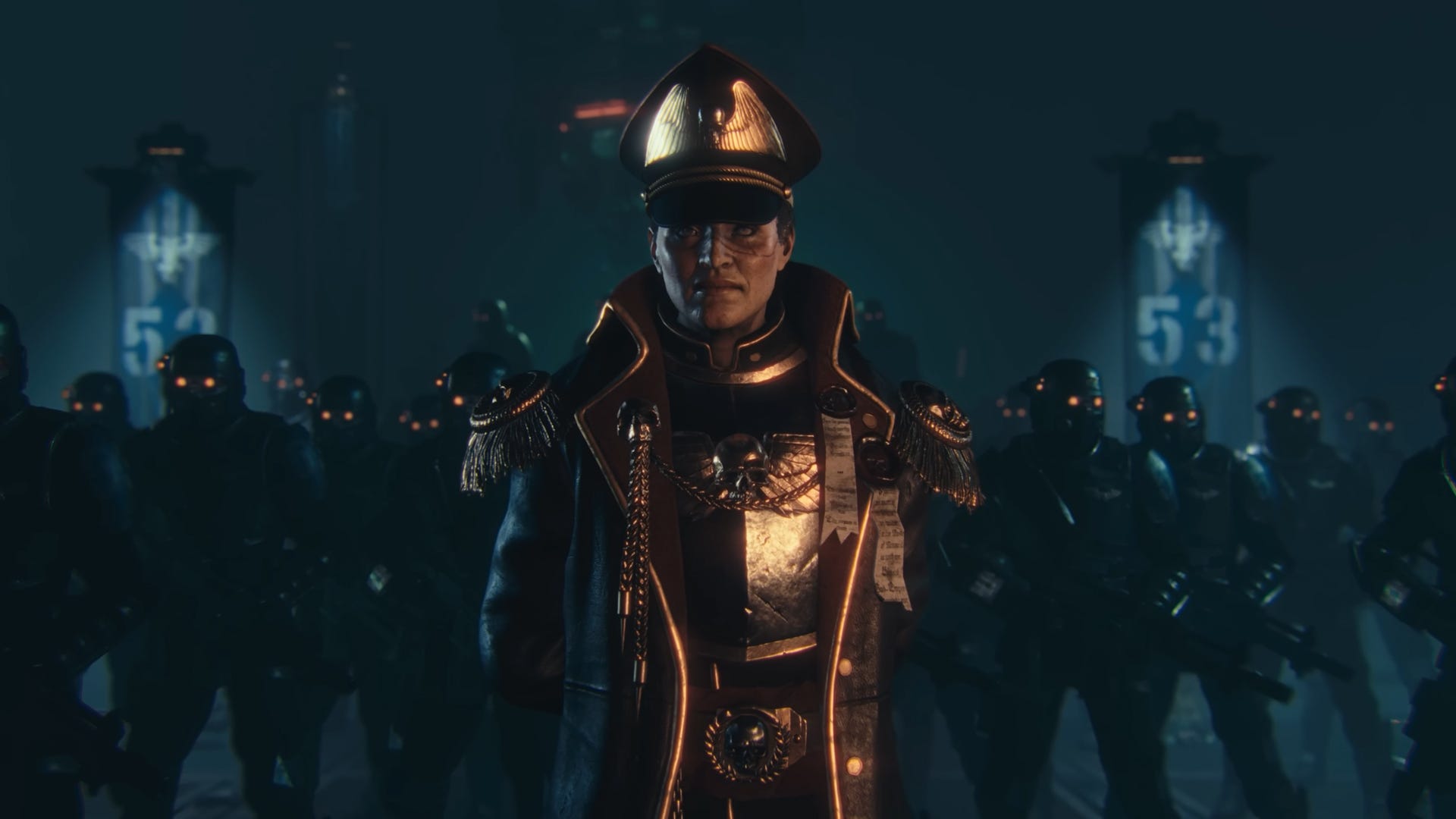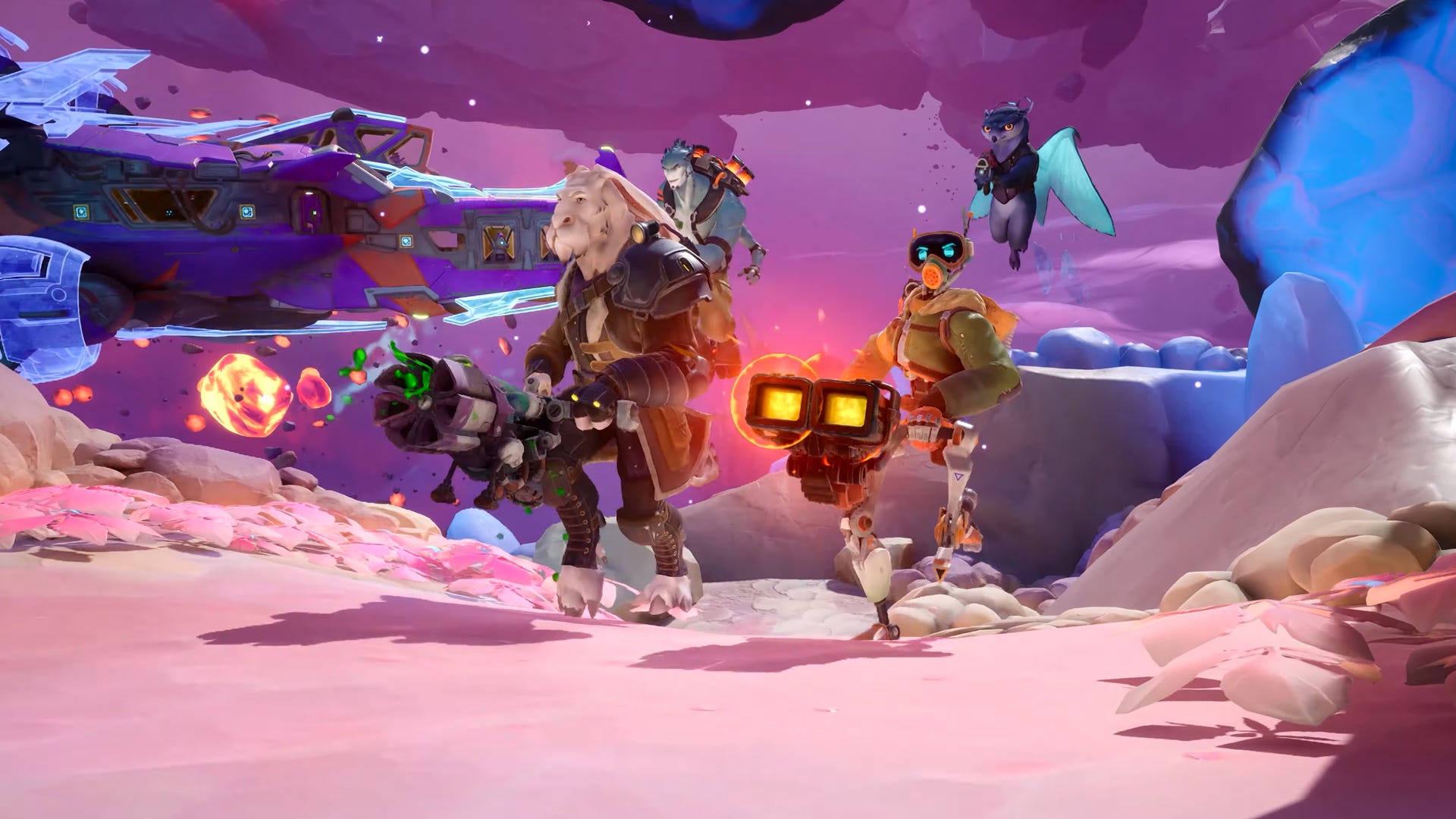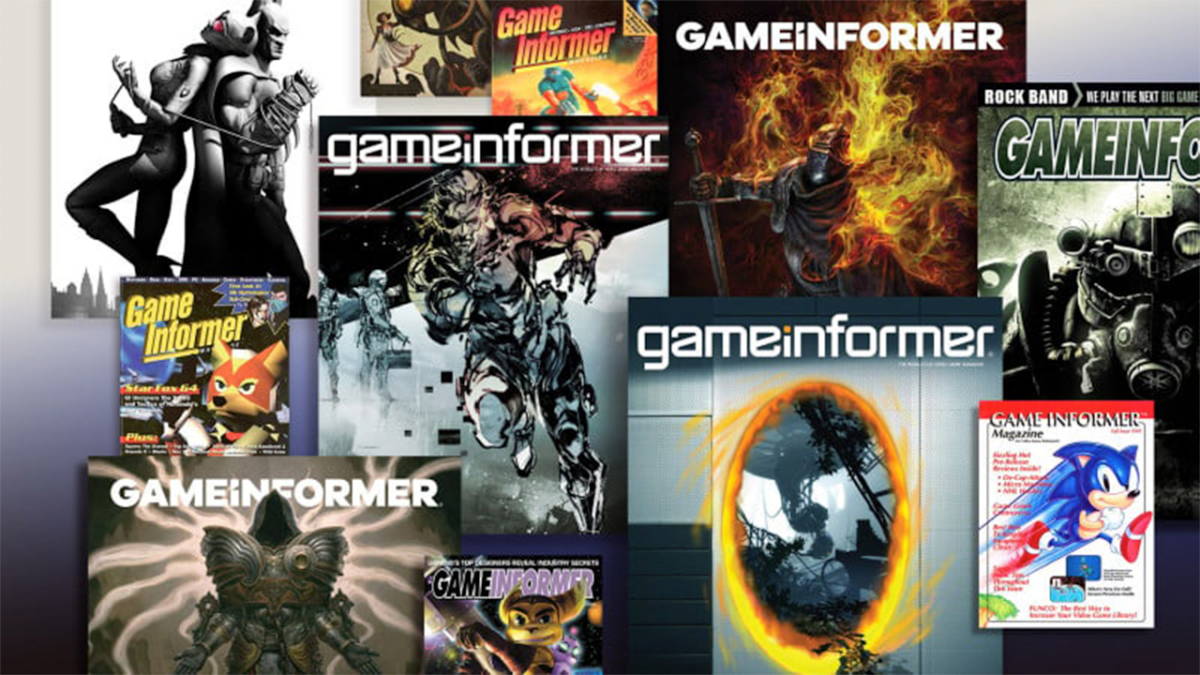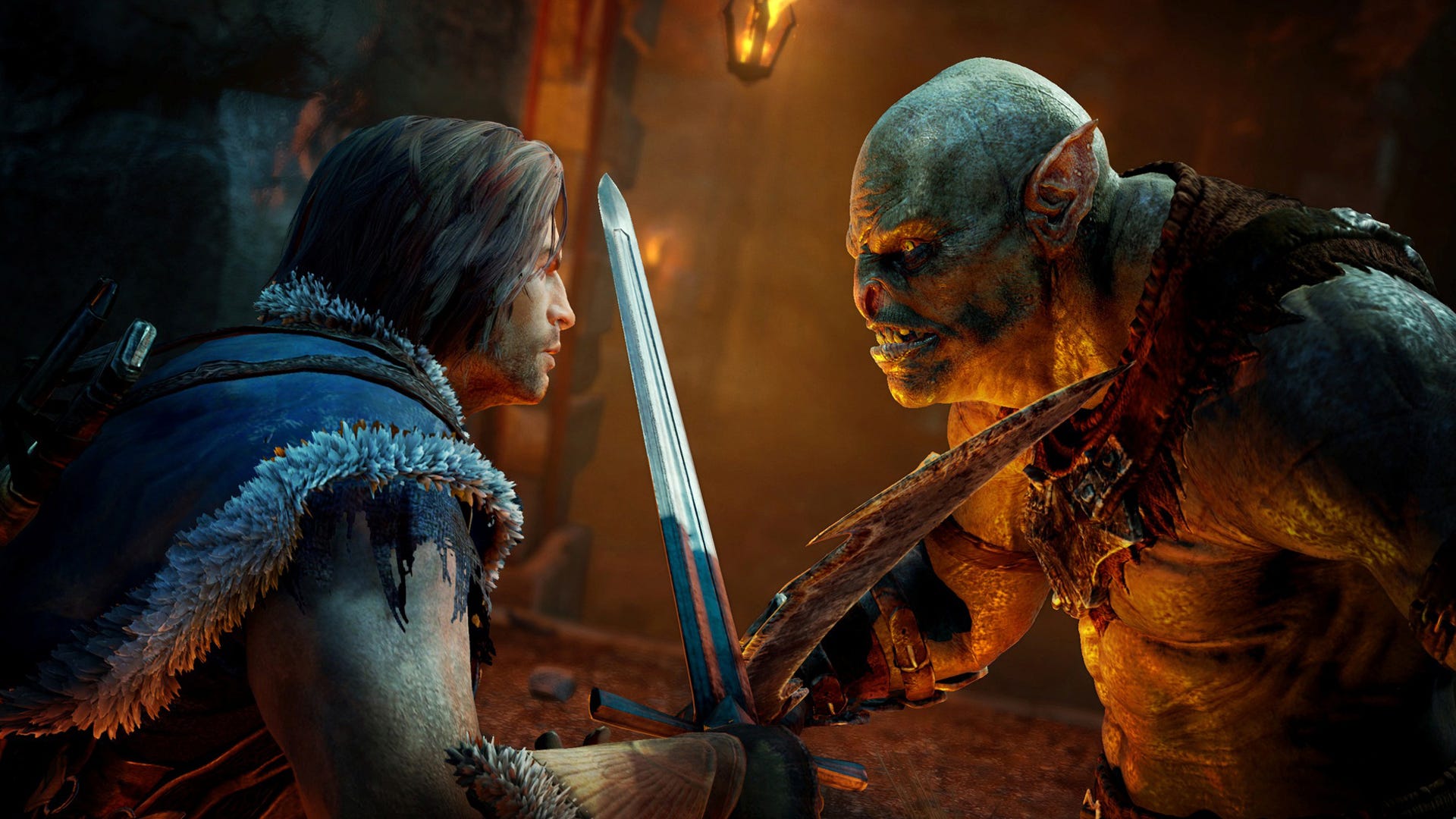
After a whirlwind end to 2024 and a strong start to 2025 that included the best Call of Duty in years, a fantastic Silent Hill 2 remake, a new Dragon Age, a new Assassin’s Creed, STALKER 2, Metaphor: ReFantazio (AKA IGN’s Game of the Year 2024) and a stunningly great Indiana Jones game, among others, it’s about to get a lot tougher to pick your favorite Xbox Series X/S games. Here’s our staff’s list of the 25 best games on the Xbox Series X|S – meaning they were either released directly for this generation of Xbox consoles or have been updated to take advantage of their improved resolution, frame rate, and other features. Note that to avoid the scourge of recency bias, we’ve cut off new additions as of the end of September 2024, since anything more recent than that is still a bit too new to rank. But don’t worry, they’ll be considered for future rankings!
But what do we mean by “best?” To be very clear, this is not an attempt at an “objective” ranking that will indisputably line up with the tastes of gamers of all types. That, sadly, can never exist; when one person’s epic RPG masterpiece is another’s boring and impenetrable slog, they’ll never see eye to eye on where that game should rank against others of different genres. Even the personal lists of two people who love the same types of games will rarely line up exactly.
Instead, this is a list of games that IGN’s crew of Xbox gamers recommend as a group, with major re-ranks using our Face-Off tool so that everybody got to weigh in equally on which games they thought should be placed above others. It’s presented in the spirit of recognizing games we love, and encouraging others to try them if you haven’t.
With only 25 slots to fill, there are tons of amazing recent games that didn’t float to the top – but that doesn’t mean we don’t think they’re awesome, too! Everybody who participated in voting has a long list of personal favorites that didn’t gain quite enough traction with the group to make the cut, which is inevitable when there are this many games and so many different perspectives. We encourage you to make your own Playlist of your favorite Xbox Series X|S games and share it in the comments below!
Most recent game updates were made on March 25, 2025.
More on the best of Xbox:
25. Resident Evil 2
While the remade version of Resident Evil 4 is the IGN staff’s favorite in the series, Resident Evil 2 isn’t far behind. It’s absolutely gorgeous to look at and contains some of the legendary zombie-slaying series’ best moments to date. This modernization brings all the best parts of classic Resident Evil games to newcomers, letting us experience the original’s characters, enemies, and locations with features like ammo crafting, an over-the-shoulder camera, and expandable inventory slots. For series veterans, it feeds off your familiarity with the iconic RPD and subverts expectations in unique and horrifying ways, plus Easter eggs are sprinkled throughout the Racoon City Police Station. The tension created by Mr. X chasing you is palpable, creating some of the series’s best unscripted scares. His presence alone keeps additional playthroughs from getting repetitive and maintaining the horror.
24. Hitman: World of Assassination
Seeing as it collects all of the deviously designed scenarios from Io Interactive’s recent Hitman trilogy under one banner, Hitman: World of Assassination is too good to pass up. With all of the rich, rewarding, and highly replayable sandboxes at your fingertips, there’s virtually no end to the cold-blooded and often hilarious trouble you can cause as Agent 47. Tracking down a multitude of surprising and imaginative assassination opportunities requires examining every nook and cranny, carefully observing every NPC’s behavior, and making full use of every piece of gear and weapon – and getting away with a perfect hit with no one even knowing you were there is one of gaming’s biggest and most satisfying thrills.
23. Warhammer 40,000: Space Marine 2
Delivering an unexpected but extremely welcome sequel to Relic Entertainment’s 2011 Warhammer 40K Space Marine, Saber picked up the chainsaw sord and ran with it, smashing through waves of Tyrannid enemies in a highly satisfying way. Its slow but steady third-person action has clear roots in the classic Gears of War games, but this is no cheap knock-off: it makes those ideas its own by facing you and your co-op squad off against enormous hordes of enemies and encasing everything in Warhammer 40K’s distincitive look and feel (which itself influenced just about every power-armored space marine design from the past several decades).
22. Wolfenstein 2: The New Colossus
BJ Blazkowitz’s 2017 alternate-history Nazi curb-stomp romp was updated to run in its full glory on Xbox Series X, and it absolutely holds up. Between the giddy joy of blasting away with a machine gun in one hand and a shotgun in the other, some fantastic locations across fascist-occupied America, and an absolutely diabolical villain to go up against – General Engle has some pretty jaw-droppingly sadistic moments – this is an absolutely non-stop shooter the likes of which we haven’t seen in recent years. It doesn’t seem like the kind of game that could have a heart under it all, but the story also does a great job of establishing its supporting cast, and even humanizing even a killing machine like BJ.
21. Unicorn Overlord
The first thing that will stand out with starting Unicorn Overlord is the striking 2.5D art style, with characters appearing to almost float through through storybook backgrounds. While it almost deserves to make this top 25 list on looks alone (shout-out to the best looking food in gaming), it is paired with an excellent squad-based combat system that blends traditional turn-based strategy gameplay and RTS mechanics as you explore a tabletop-inspired overworld, gather resources, and discover secrets to rebuild the war-torn nation. The tactics come in as you decide how to move your squads across some of the best and most creative maps in strategy games and work out what type of squads to create and deploy. There’s a huge amount of build variety available, with 40+ classes and 70 characters to choose from to form your specialized squads. These diverse characters come from a variety of backgrounds and races, from the more mundane humans and elves to werelions, giants, and angels, and that’s the basis for the strongest moments in the story.
20. Marvel’s Midnight Suns
XCOM developer Firaxis’s take on Marvel superhero combat is challenging and refreshing thanks to its deckbuilding approach to turn-based brawls. Crafting a set of cards that allows heroes to work as a team by combining their signature moves and taking down supernatural-infused enemies keeps things fresh, evolving, and unpredictable over the course of an epic-length campaign. It looks great, too, and bashing enemies into things for increased damage is endlessly entertaining. If you’re into the Persona-style relationship-building conversations there’s a lot there for you to uncover as you chat with Iron Man, Captain America, Spider-Man, and many more favorites between battles – if not, you can skip most of that and jump back into the action.
19. Doom Eternal
Is Doom Eternal better than 2016’s Doom? That debate will rage on for eternity, but for this list it doesn’t matter because Doom (tragically) was never updated for the Series X/S. That makes Eternal the champion of this generation by sweet, sweet default. The current standard-bearer for the revitalized first-person space-demon-mulcher series is fast, punchy, gloriously gorey, and easily one of the best single-player shooters in years. Loaded with excellent weapons, abilities, secrets, and enemies, this is a game that continually teaches you how to play faster, smarter, and more efficiently, with lots of options at every step of the way to tailor fights to your preferred slaying style, and it’s an absolute blast along the way.
18. Resident Evil 4
Simultaneously one of the newest games on this list and also the oldest, the 2023 remake of 2005’s Resident Evil 4 took everything that made the original a standout action-horror classic and modernized it to thrill present-day gamers just as much as it had those who always saw it through rose-tinted glasses. Rebuilt from the ground up, it builds tension with high-intensity combat against a ferocious cast of creatures and brings the Resident Evil world to life with rich detail as the story rapidly guides you through a series of unwaveringly impressive action sequences. There’ve been many games that have attempted to evoke RE4’s style over the years, but none that nailed it quite as well as this.
17. Persona 3 Reload
A stellar visual overhaul and countless small changes and additions beyond it leave a significant impact, making Persona 3 Reload a more fully realized version of a beloved RPG. Although still dated in some respects next to Persona 5, quality of life improvements and new features refresh its exciting turn-based combat and add depth to its touching story moments. Through an incredible new voice cast that embodies these unforgettable characters and an endearing soundtrack to reforge its identity, Persona 3 Reload tells a powerful, timeless story of tragedy and hope with sharp emotional sincerity over the course of its meaty 70-hour campaign. This is the kind of remake we always hope for.
16. Prince of Persia: The Lost Crown
It seems like every other game that comes out these days has at least a bit of Metroidvania design in it, so it’s rare for one to stand out in such a crowded genre. And yet Prince of Persia: The Lost Crown absolutely nails everything you could want in a side-scrolling platformer that has you piling on abilities to reach new areas on a truly massive map. It has all the standard moves and features (double jump, dash, equip-able amulets), plus lots of fun innovative ones – like the ability to teleport across the room to avoid death during the tough-but-fair boss fights. It introduces those moves at a satisfyingly steady pace, so by the time you reach the late-game bosses and teeth-clenching environmental challenges you’re basically an expert, navigating obstacles like a virtuoso playing an instrument and making it all look easy.
15. Devil May Cry 5
Even with all of its imitators, there’s still nothing quite like a Devil May Cry game, and Devil May Cry 5 stands tall not only as not only one of the best in its own series but one of the best character action games ever created – full stop. No other game offers the same level of creativity and expression through its combat, whether you’re playing as Nero and bouncing foes around in the air with your Gerbera Devil Breaker, slashing them while precisely timing revs of your sword to charge up your Exceed meter; or chilling out as V while your summoned familiars fight all around you; or hot-swapping between an entire arsenal of weapons and fighting styles as Dante. The depth of DMC5’s combat is near bottomless and endlessly fun to play around in, with finely tuned difficulty options to meet you wherever your skill level is at.
14. Assassin’s Creed Odyssey
Among the three (soon to be four) Xbox Series X-generation Assassin’s Creed games, Assassins’ Creed Odyssey stands head and shoulders above the rest. This epic takes Origins’ combat style and focus on roleplaying, adds some extra ingredients to the mix, then sets it all against the sprawling backdrop of Ancient Greece – a world aflame with the war between Athens and Sparta. It’s an enormous, vibrant game, with some of the most stunning vistas we’ve seen in the series both at land and sea (yes, naval warfare is in the mix, and it’s wonderful).
Its distinctive spin on Assassin’s Creed’s notoriety system sees you hunted across these environments, in a series of cat-and-mouse chases that set a new standard for the series, while the nation struggle system sees you fighting large-scale battles in the name of your chosen faction. It’s also got a relatively compelling story for a game that can take 60-odd hours to beat, with some eccentric sidequests that’re fronted by a genuinely charismatic protagonist (whether you play as the male or female version). Even after you finish Odyssey’s main story, there’s still so much to plunder and discover, and it’s a delight to simply exist in its meticulously recreated historical world.
13. Forza Horizon 5
Forza Horizon 5 isn’t just the best game of 2021 (as IGN’s 2021 Game of the Year winner), it’s also the best car game, period, of at least the last decade. The difference between Horizon 5 and other racing games (not named Forza Horizon) is that it is, in fact, a driving game. And yes, there’s a difference between a driving game and a racing game. Driving can include racing – and FH5 most certainly does – but perhaps the greatest of its many triumphs is successfully tapping into someone’s love for cars. You don’t need to be a gearhead with a nose for adjusting tire temperatures and maximizing downforce, as you do in simulation racers.
Here, there’s quite literally fun around every corner, whether it’s trying to best your buddy’s photo radar speed, busting through one of the countless billboards scattered around Horizon’s gorgeous fictionalized Mexico, entering proper Horizon Festival events, or just doing goofy multiplayer events. Forza Horizon 5 is as chill and casual or as serious and hardcore as you want it to be, and that’s a near-impossible feat for any car game.
12. Alan Wake 2
It took Remedy 13 years to get the sequel of its cult-favorite thriller Alan Wake off the ground, but it was worth it. Billed as Remedy’s first true survival horror game, the studio best known for its high-concept, cinematic approach to games takes a similarly filmic view to the new genre by creating a terrifying chapter in Alan Wake’s — and new protagonist Saga Anderson’s — stories. Fans of horror will find a tense, scary experience, but those of you waiting to learn what happened to Wake all those years ago will want to check out Remedy’s sequel immediately.
11. Remnant 2
“Dark Souls with Guns” was the theme of the first Remnant, and Remnant 2 doubled down on that idea with more guns, classes, and more enemies to blast to pieces, all while also delivering extremely challenging and rewarding bosses and a major twist to its design. Remnant 2 is different each playthrough thanks to the way it randomizes most puzzles, bosses, and events each time you replay it. And you will probably want to replay Remnant 2 a lot, because sometimes you will need to defeat bosses in multiple ways to get its most enticing rewards. The fact that two players can finish the campaign and fight different bosses along the way (or maybe they see the same bosses but get different rewards) makes it almost as much fun to talk about as it is to play. Since launch, it’s added two sizable DLC packs with more storylines, weapons, classes, gear, and crazier bosses. Remnant 2 is one of those games that always has us coming back for more thanks to its high replayability, creative design, fun gameplay, and ability to easily play with friends.
10. Halo: The Master Chief Collection
Halo: The Master Chief Collection now collects six Halo games all under one digital roof – everything except Halo 5: Guardians. It’s been torn down to the studs and rebuilt in grand fashion, and even better, it’s been upgraded AGAIN for Xbox Series X with support for 120fps gameplay. Crazy to think that these games were 480i/30fps the first time we played them…
See our guide on how to play the Halo games in order before diving into the collection.
9. Star Wars Jedi: Survivor
Respawn’s sequel to the hit Star Wars Jedi: Fallen Order continues the journey of Cal Kestis as he makes his way through the galaxy and fights the Empire. Star Wars Jedi: Survivor improves on almost every element of the first, refining the level design and combat to its sharpest point yet. It is also one of the best avenues to explore the Star Wars universe in its latest era. See our list of the best Star Wars games to see where it ranks.
8. Hades
Hades is the current gold standard of the roguelite genre, and it isn’t even close. From its exhilarating combat, to its incredible soundtrack, to its clever and well written narrative with characters that seemingly never run out of meaningful things to say, all the way to its deep and innovative post game that keeps you wanting to come back for more even after beating the last boss.
It may be incredibly difficult, but it never feels punishing in defeat. Dying is part of the fun, and actually comes with its own rewards in the form of new conversations with its fascinating cast of characters, new opportunities to purchase game changing upgrades, and an opportunity for a brand new run with a completely new set of godly boons that dramatically alter how you approach combat. Hades is a masterclass of roguelite design, and just another example of how Supergiant Games just doesn’t miss.
Hades 2 Early Access is available now.
7. The Witcher 3: Wild Hunt – Complete Edition
One of the greatest RPGs of all time is better than ever thanks to the graphics overhaul from The Witcher 3 Complete Edition. While fans of 4K graphics can now play the game in higher fidelity, the performance mode might be the way to go as it smoothes over all the rough frame-rate patches in this massive game, making this 100+ hour adventure as smooth as butter.
6. Cyberpunk 2077
Cyberpunk 2077 stumbled out of the gate at launch on consoles specifically. While the RPG has always been a state-of-the-art marvel on PC, it took CD Projekt Red a few years to optimize the game for consoles like the Xbox Series X|S. After cutting out the last-gen systems and a series of free updates, Cyberpunk 2077 and the newly released expansion, Phantom Liberty, finally shine bright on Xbox. With best-in-class presentation, a deep and rewarding RPG system, and one of the best stories CD Projekt ever created, now is finally the time to hack into Cyberpunk 2077.
5. Grand Theft Auto 5/GTA Online
Grand Theft Auto 5’s sprawling yet meticulously detailed map is still the high bar to which most open-world games aspire. Not only is it huge, it’s incredibly dense with excellent content – not just the driving and shooting and three-protagonist story that make up its campaign, and not limited to the numerous side activities, but all the sights, sounds, and bustling activity you’d expect to find in a city teeming with humans – seedy underbelly included. With so much to do, explore, and play with, both as a single-player game and Grand Theft Auto Online, it’s truly amazing on multiple levels.
As for what’s next, Rockstar has officially confirmed GTA 6 will be released in 2025. It will feature a return to Vice City and star the series’ first female playable character in a Bonnie & Clyde-inspired adventure.
4. Like a Dragon: Infinite Wealth
Describing Like a Dragon: Infinite Wealth sounds a bit like a fever dream: it’s a collection of minigames stuffed inside of larger activities inspired by classics like Crazy Taxi, Pokémon Snap, Pokémon, and Animal Crossing… and all of that is wrapped up inside of a life simulator, which is itself inside of a 50-hour turn-based RPG. Miraculously, this somehow all works together and balances honoring the roots of the Like a Dragon/Yakuza series while continuing to propel it forward. This can be seen in almost every aspect, most obviously that a huge portion of the story takes place outside Japan, and instead has you exploring Hawaii.
Meanwhile, turn-based combat makes a return from Yakuza 7, boasting even more jobs (tennis ace OP!) and a ton of small refinements that vastly increase the amount of control and customization in combat while remaining true to Yakuza’s traditional beat em’ up style. In a series known for heartfelt stories, Infinite Wealth’s is arguably the most emotional, paying homage to the franchise’s classic characters with a plot driven by the values and actions of the new cast. Mixing the old and new characters is something that often backfires in a long-running series, but RGG Studios expertly blends Kiryu’s and Ichiban’s stories, pulling off one of the best legacy stories anywhere.
3. Persona 5 Royal
Persona 5 Royal would have very little true competition in the contest for the title of best Japanese RPG of all time. Its endlessly stylish art and unforgettable, jazzy soundtrack create a vibe it’s hard not to fall in love with. And that’s before we even get to the cast of iconic, endearing characters and an unexpectedly deep, thought-provoking story that only grows more relevant with every year since it was originally released in 2016. Nobody does this style of turn-based, small-party combat better than Atlus, and P5R is the ultimate refinement of everything great about the franchise’s earlier adventures.
All of that could be said of the original 2016 version, too, but with Royal, just about everything – from the dialogue to the story to dungeon exploration – has been made bigger and better. It’s far from just a remaster with some neat extras; it’s almost like getting another entire game on top of an already fantastic one.
2. Baldur’s Gate 3
Baldur’s Gate 3 is easily the best computer RPG of any generation thanks to its robust storytelling and nearly limitless player freedom. Whether that’s romancing a Mind Flayer or convincing a squirrel to go into battle, the ability to play through the world of Baldur’s Gate on your own terms is the reason why Larian Studios’ latest RPG has captivated so many players.
The cast of characters, in particular, shines in this party-based RPG. Your companions in this game are some of the most fun, fully-realized characters in any RPG and although Baldur’s Gate 3 is already hundreds of hours long, you’ll want to re-roll new characters to try and mine as much as you can from this deeply rich fantasy world.
Winner of multiple Game of the Year awards, Larian Studios has single-handedly revitalized the computer RPG genre and showcased that ingenuity and smart game design can triumph over the mightiest graphics.
1. Elden Ring
Whether you’re a longtime fan of FromSoftware’s notoriously challenging games or intrigued by the constant buzz, Elden Ring is a fantastic starting point for seeing what the soulsborne genre is all about. Its streamlined introduction, versatility in accommodating your choice of playstyle, and open-world design all work to alleviate the “brick wall” dilemma of getting stuck on a difficult boss in Dark Souls games. It’s that elasticity that makes this FromSoftware adventure a (slightly) friendlier one, while still being full of godlike bosses looking to snuff out your life, threateningly large maps, and intriguing NPCs rife with charm, mystery, and tragedy.
It’s since been kicked up a notch thanks to the outstanding Shadow of the Erdtree DLC expansion, which serves as a condensed version of the main game that’s absolutely jam-packed with secrets, valuable treasures, ultra-challenging boss battles, and horrific monstrosities to face of against at every turn. When you stack that on top of the main game, it’s an incredible quantity of high-quality tests of your soulslike mettle.
Upcoming Xbox Series X|S Games in 2025
April 2025:
- The Renovator: Origins – April 4
- South of Midnight – April 8
- Commandos: Origins – April 9
- Descenders Next – April 9
- Monster Energy Supercross 25 – April 10
- Promise Mascot Agency – April 10
- Big Buck Hunter: Ultimate Trophy – April 11
- Lost Records: Bloom and Rage Tape 2 – April 15
- Lushfoil Photography Sim – April 15
- Mandragora: Whispers of the Witch Tree – April 17
- Clair Obscur: Expedition 33 – April 24
- Fatal Fury: City of the Wolves – April 24
- Sunseed Island – April 24
- Yasha: Legends of the Demon Blade – April 24
- MotoGP 25 – April 30
May 2025:
- Metal Eden – May 6
- Doom: The Dark Ages – May 15
- Capcom Fighting Collection 2 – May 16
- Fantasy Life i: the Girl Who Steals Time – May 21
- Onimusa 2: Samurai’s Destiny – May 23
- To a T – May 28
- Elden Ring: Nightreign – May 30
What New Games are Available on Xbox Game Pass in March 2025?
On March 18, 33 Immortals (Game Preview) launched on Game Pass. The following day saw Square Enix’s roleplaying game Octopath Traveler II, which our reviewer called “a very enjoyable JRPG sequel that feels a little too safe and familiar,” and Trian Sim World 5. March 20 saw Mythrecked: Ambrosia Island, and the 25th added Blizzard Arcade Collection. On the 26th, Game Pass gets two highly regarded games in Batman: Arkham Knight and Tunic.
Finally, on March 27, Atomfall launches on Game Pass Ultimate. Our reviewer gave it an 8/10, calling it “A compelling post-apocalyptic survival story that satisfyingly bends to your choices and discoveries no matter which direction you take.”
For more details about a subscription, check out our guide to Xbox Game Pass plans and prices.












